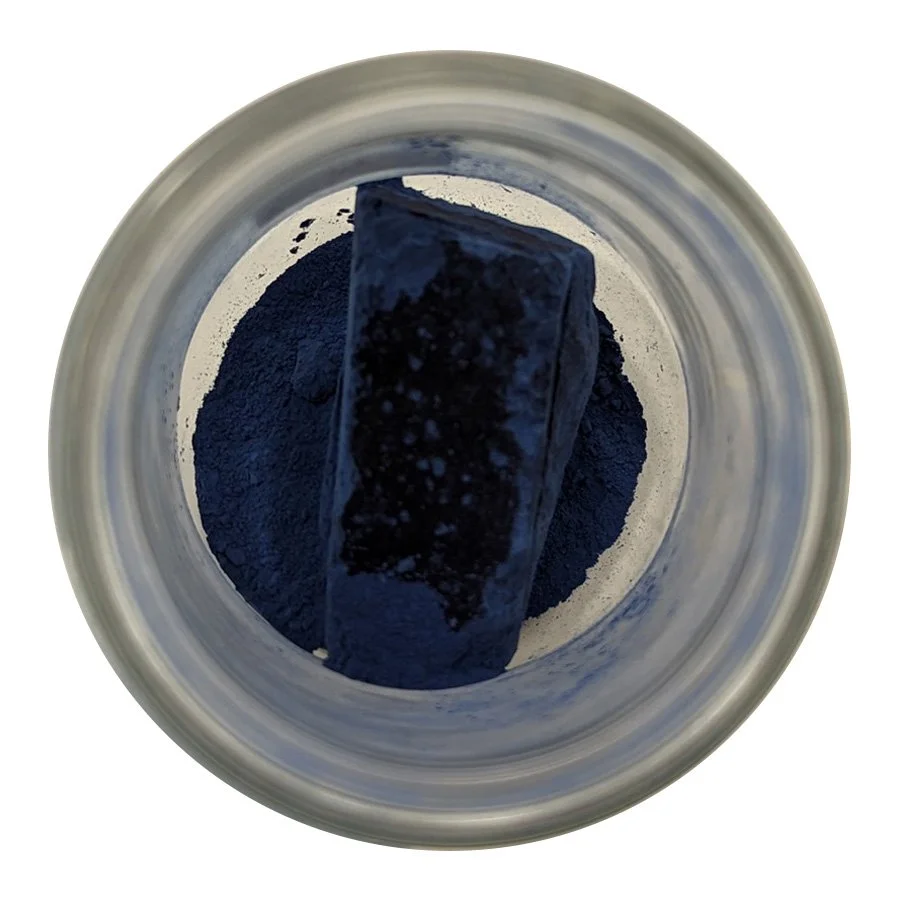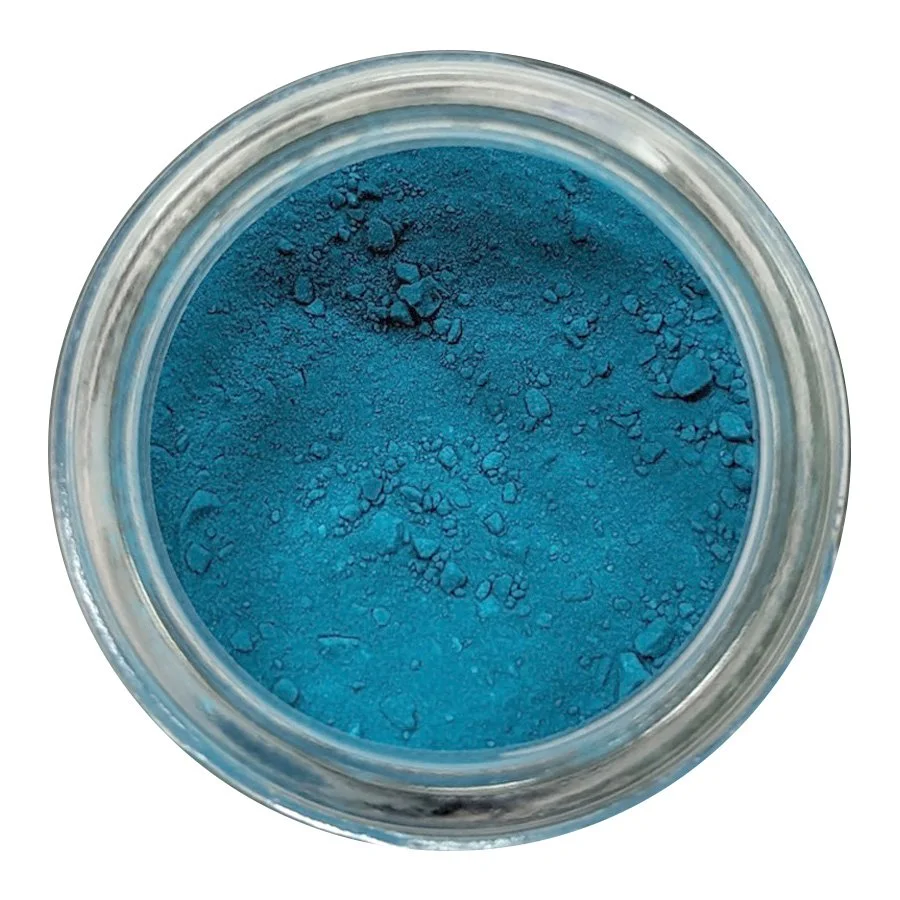GREEN INK (MEDĀD-E SABZ)
A total of 9 recipes were found on green inks. 4 from the treatise Resāle-ye Buqalamun by Bahmani (15th C), 1 from the treatise Majmu‘ al-Ṣanāye‘ by Anonymous (16th C), and another 4 from the treatise Kašf al-Ṣanāye‘ by ‘Ali Ḥosseini (19th C). 1 recipe from each treatise is given below:
First Recipe from the treatise Resāle-ye Buqalamun by Bahmani (15th C) :
در ساختن مداد خوب بستانند سه درم نیل و بسایند خوب به آب گرم تا چون مرهم شود. پس بندازند برو یک درم زنگار و درهم کنند تا سبز شود و به آن بنویسند که خوب است
‘Good ink: Gather 3 Deram (45 g) indigo and grind well with warm water until ointment like. Then add 1 Deram (15 g) Verdigris, and mix until green, and write for it is a good ink.’
Indigo
Verdigris
Second Recipe from the treatise Majmu‘ al-Ṣanāye‘ by Anonymous (16th C):
اگر آب مازو و پیاز و زردچوبه ونیل و روناس و اشخار یعنی ساجی، از هریک جزوی جمع کند و به آن بنویسد خطی سبز از هر چیز خوبتر آید
‘If you mix some myrtle extract, onion extract, turmeric, indigo, madder (runās) as well as potash (Ašḵār) and write with it, it will give the best green coloured ink’.
Third Recipe from the treatise Majmu‘ al-Ṣanāye‘ by Anonymous (16th C):
نوع دیگر بلو ورنگزرد[1] به قدر حاجت ریخته، بنویسند
‘Mix blue, and yellow to the desired amount, and use.’
[1] Reads: “بلو و رنگ زرد” - blue and the yellow colour . Since blue is written in transliteration form and not the translation, it most probably means Prussian blue ([Fe(II)(CN)6]4), which has been seen as transliteration in other recipes.

